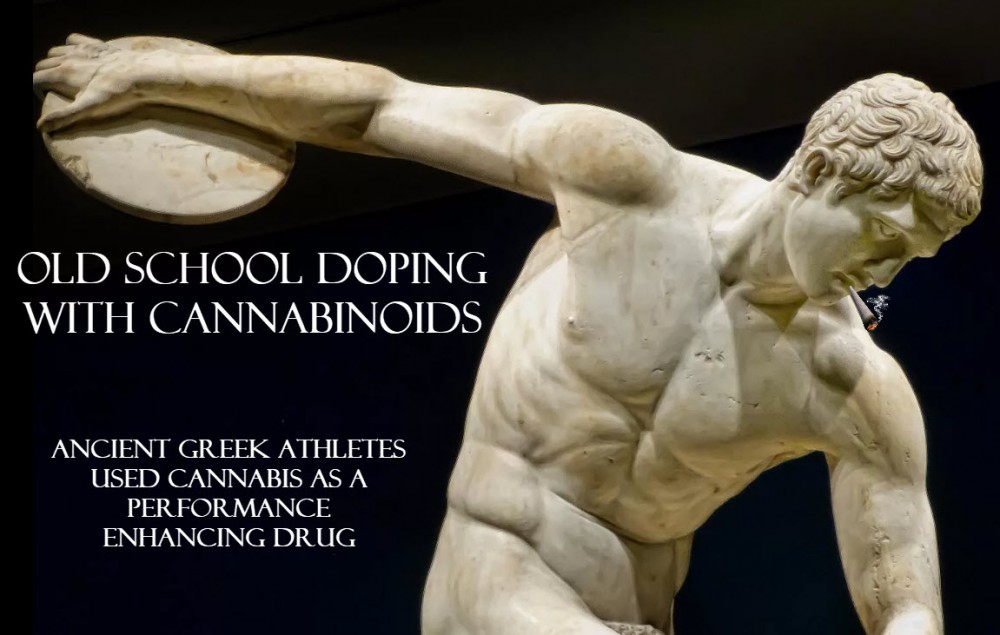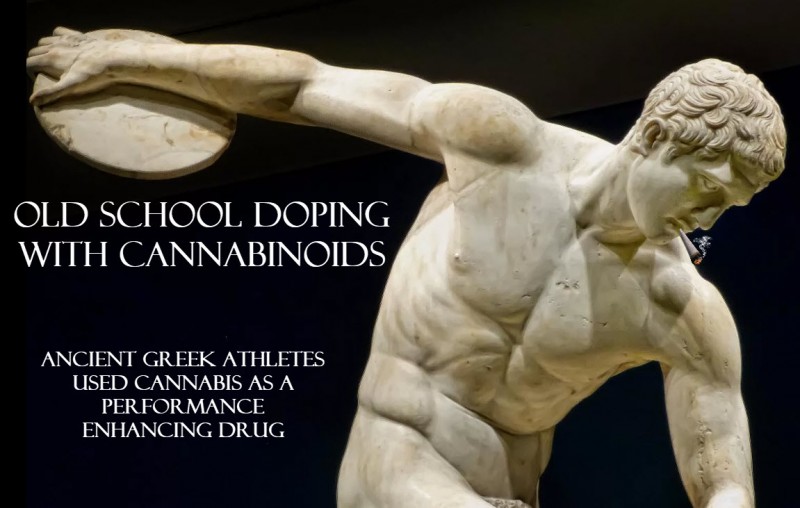Old School Doping with Cannabinoids - Ancient Greek Athletes Used Cannabis as a Performance Enhancing Drug

During the times of classic Greek antiquity many foundations of modern civilization were laid. Democracy, philosophy and the Olympic games all date back to this time. The Olympic games, originating in the town of Olympia, were first celebrated in antiquity as a form of worship of the god Zeus, and then re-established in 1896, inspired by the ancient games.
Some things were quite different during these ancient Olympic games: women and non-Greeks were not allowed to compete, and all competitors ran around naked, hence no one had space on their jerseys for any advertising (“what’s the point then?” many modern athletes would probably ask). But some things were pretty similar when comparing the ancient and the modern Olympic games: competitors got hurt, and used medical treatments to alleviate the pain. The ancient games featured boxing, wrestling, and pankration, a sport not unlike modern mixed martial arts. There were lots of chances for the naked Greek guys to get hurt!
In an entertaining paper by Else Bartels and colleagues from Copenhagen University (“An Ancient Greek Pain Remedy for Athletes”, Pain Practice, Volume 6, Issue 3, 2006 212–218) they describe an ointment used by ancient Greek athletes. The ointment was called “Olympic Victor’s Dark Ointment” in a description by the famous medical ancient chronicler Galen, and contained what at first sight seems like a well though-out mix of herbs. There was no drug testing in ancient Olympia – the technology to detect substances in athletes’ blood was not around yet, and society was probably a bit more tolerant in regards to chemical improvement of the quality of life anyway. Hence the ointment featured both canabinoids (substances akin to the active component in marijuana) and opiates (natural chemicals similar in structure and function to opium and morphine). In addition, the ancient sports physicians added some saffron to the cream. Saffron contains natural chemicals which can reduce swelling and inflammation. The cannabinoids in the recipe did not come from the marijuana plant, but from the Frankincense tree. The opiates in the ointment came from poppy. The Greeks had already figured out how to harvest the analgesic juice from the poppy-plant, and were even aware of the danger of over-dosing it (“it can lead to sleep which can end in death”).
Bartels and colleagues very meticulously analyzed how much of each active component was contained in the ointment, and how much pain relief a typical dose would have provided. This is no trivial matter – the ingredients were not given in grams by Galen, which are (like the kilogram on which they are based) a modern invention. Rather, during Galen’s times (he was a contemporary of the Roman emperor Hadrian, alive 76 – 138 A.D.), weights were measured in equivalents of coins, like Drachmas, Obols and Chalcis. For liquids, the ancients used such long-forgotten measures like Sextarius, Cyathus, Hemina, Cyathus and Acetabulum. These were clumsy units, difficult to convert among each other, kind of like the imperial system in our day & age!
So, did the ancient Olympic Victor’s Dark Ointment work? Were the ingredients concentrated enough to help the injured ancient athletes? Probably yes. The amount of opiates from poppy in the ointment was significant, and opiates are taken up very well through the skin – this is a principle used in modern-day pain-relief patches. The pain relief provided to anyone who got his arm twisted in an ancient wrestling match or who had his classic Greek nose punched in the Olympic boxing competition would have been quite beneficial.
The amount of cannabionids, however, was too small to make a difference and in contrast to opiates, cannabinoids are not taken up well through intact skin. The uptake into the injured athlete's body could have worked somewhat better had he suffered an open cut, hence allowing the cannabinoids to directly enter the blood stream. Even then, though, the dosages were probably too small to make a real difference.
Also, the amount of saffron was too minor to do any good. The ointment worked due to its high opiate content. The ancient doctors likely failed to do a systematic study of the effectivity of each component of their Olympic Victor’s Dark Ointment. Unfortunately they missed out on the now-well-established pain relief properties of cannabinoids!
SPORTS, ATHLETES, AND CANANBIS, READ THESE..
HOW ATHLETES AND SPORTS BENEFIT FROM CANNABIS








